Austin Walters
Sensitive Data Detection with High-Throughput Neural Network Models for Financial Institutions
Dec 17, 2020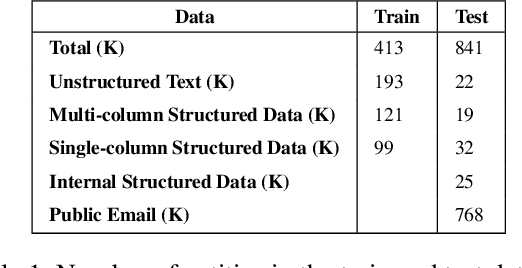
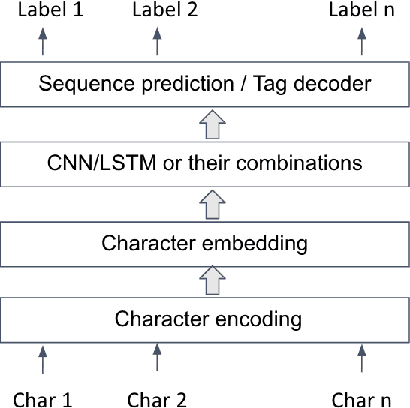
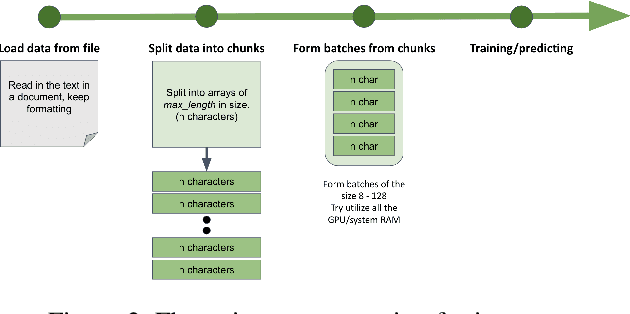
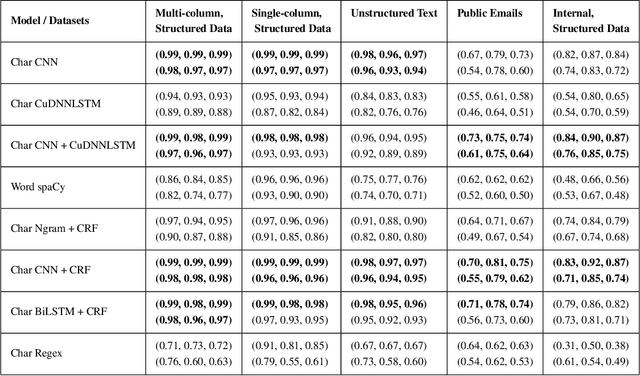
Abstract:Named Entity Recognition has been extensively investigated in many fields. However, the application of sensitive entity detection for production systems in financial institutions has not been well explored due to the lack of publicly available, labeled datasets. In this paper, we use internal and synthetic datasets to evaluate various methods of detecting NPI (Nonpublic Personally Identifiable) information commonly found within financial institutions, in both unstructured and structured data formats. Character-level neural network models including CNN, LSTM, BiLSTM-CRF, and CNN-CRF are investigated on two prediction tasks: (i) entity detection on multiple data formats, and (ii) column-wise entity prediction on tabular datasets. We compare these models with other standard approaches on both real and synthetic data, with respect to F1-score, precision, recall, and throughput. The real datasets include internal structured data and public email data with manually tagged labels. Our experimental results show that the CNN model is simple yet effective with respect to accuracy and throughput and thus, is the most suitable candidate model to be deployed in the production environment(s). Finally, we provide several lessons learned on data limitations, data labelling and the intrinsic overlap of data entities.
Towards Automated Machine Learning: Evaluation and Comparison of AutoML Approaches and Tools
Sep 03, 2019


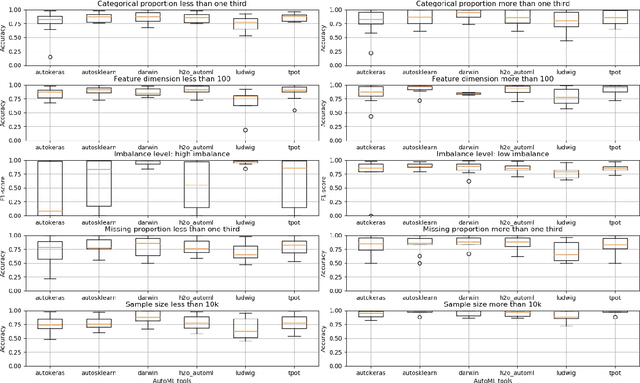
Abstract:There has been considerable growth and interest in industrial applications of machine learning (ML) in recent years. ML engineers, as a consequence, are in high demand across the industry, yet improving the efficiency of ML engineers remains a fundamental challenge. Automated machine learning (AutoML) has emerged as a way to save time and effort on repetitive tasks in ML pipelines, such as data pre-processing, feature engineering, model selection, hyperparameter optimization, and prediction result analysis. In this paper, we investigate the current state of AutoML tools aiming to automate these tasks. We conduct various evaluations of the tools on many datasets, in different data segments, to examine their performance, and compare their advantages and disadvantages on different test cases.
 Add to Chrome
Add to Chrome Add to Firefox
Add to Firefox Add to Edge
Add to Edge